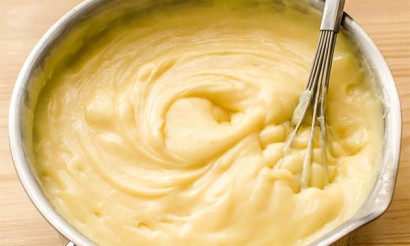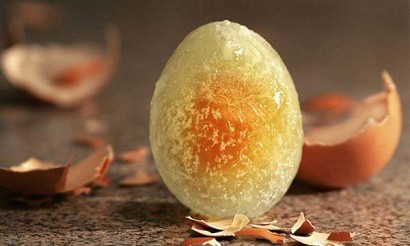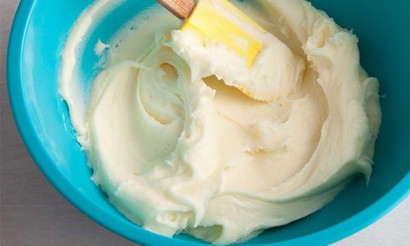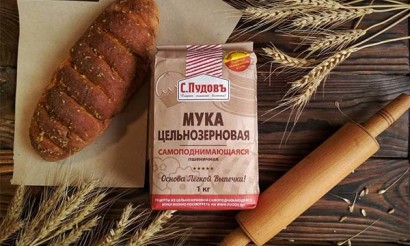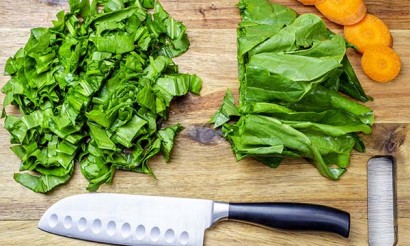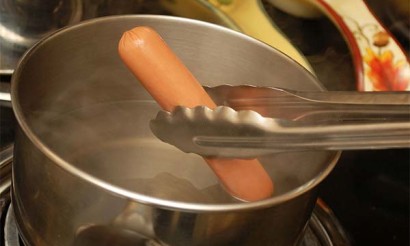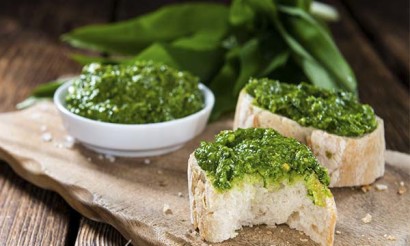How to Whip Cream correctly: 9 Ways
Whipped cream is one of the popular products that are used in the preparation of dessert. They can act on their own as a favorite treat or as a cream to layer the cakes in a cake. They are also an ingredient in more complex creams. But not every hostess manages to achieve the expected result. Even experienced cooks make mistakes that get in the way of a great result, making it necessary to start the process all over again.
The fact is that the process of whipping cream into a thick foam at first glance is simple, but there are many nuances that ensure success. If you do not consider them, you can only spoil the product and lose faith in your own strength.
What is cream
Before proceeding to the preparation of a delicious cream, it will be useful to know what cream is, what their varieties are.
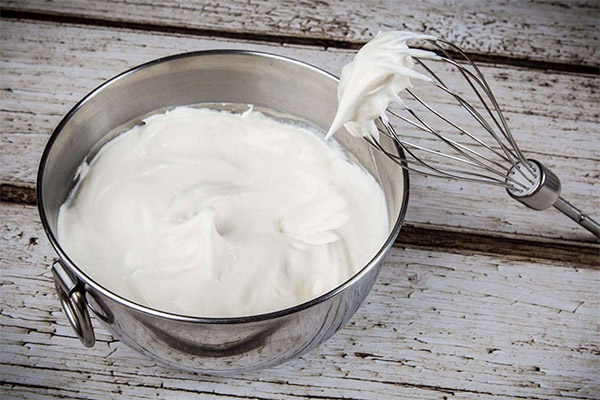
Cream is a product formed in the upper layer of milk. They are formed only in milk at rest or passed through a special device - a separator. It is a fat-containing part, the percentage of milk fat in which is from 10 to 35%. The formation of cream is due to the fact that the fat particles are denser than the liquid part and they rise gradually to the surface. One hour after milking a film of milk fat forms on the surface. This process is called sedimentation. It takes quite a long time, that's why in industrial production special technologies and devices are used, which allow to get cream much faster.
At home, it will take at least a day for the cream to stand, and then it must be carefully removed. You can also use household separators.
Types of cream
There are various classifications of types of cream. According to the method of processing, there are raw, drinkable, canned, whipped.
Raw
They do not undergo any processing, a completely natural product. They have the shortest shelf life, as not only all the vitamins and minerals are preserved, but also the bacteria, the vital activity of which leads to a rapid souring of cream.
Drinking cream
This is a category of cream that has undergone heat treatment. Pasteurization and sterilization are distinguished here. In pasteurization the raw material is heated to a not very high temperature (not exceeding 85 degrees). This preserves most of the useful properties. In sterilization, the cream is heated for a long time at a high temperature (100 degrees). Sterilization allows you to extend shelf life up to 6 months, with a partial loss of useful properties.
Canned
In this case, the product is processed by thickening, often with the addition of sugar, or dried cream is made.
Whipped
This is a completely ready-to-eat product. The raw materials are whipped with sugar until a thick froth and pressurized into aluminum cans. They can be taken and used to decorate desserts, impregnate cakes, add to cocktails.
There is also a classification according to the fat content of the cream. It is used in the U.S., but it is also used in other countries.
- Half-and-Half Cream. These are made from a mixture of milk and cream. Fat content makes up 10-18%. Used for preparing various dairy dishes, adding to breakfast cereals and drinks, such as coffee. Not to be whipped.
- Light cream. Non-fat cream (15-20%). Also not used for whipping. Used in preparation of dishes, desserts and added to coffee.
- Fats of heavy cream. Fat content of double cream is 36-40%. They can be easily and quickly whipped, they form a stable foam. It is used by confectioners.
There are also less heavy cream (30-36%). This product is even easier to whip than the previous one, gives more volume and is not as quickly fermented as heavy cream.
In stores you can always find drinking cream with a fat content of 10-15%, less often you can find a product with a fat content of 20%. But whipping cream is a bit harder to find, but it is on sale. Some cooks say that they can be replaced with cream, which is sold by private vendors at the market. It is recommended to dilute it with milk before whipping, since its fat content is usually higher than required, which can lead to quick separation and formation of butter.
What is the best cream for whipping?
The choice of cream for whipping must be approached carefully and judiciously. First of all, you should know that for whipping the product with more than 30% fat content is suitable. You can achieve results with less fat cream (for example, 25-28%). But such cream will quickly lose its shape and fall off. It is also not a good idea to work with cream with a fat content over 36%. They are too dense and hard to whip. The product stratifies very quickly, you get butter and whey.
You should also pay attention to the shelf life and freshness of the product. Cream that can be stored for more than 10 days will not be the best option. This means that the raw material has undergone a deeper processing, so partially the taste and useful properties have been lost. With the necessary indicators of fat content, the result will be achieved, but it will not bring much pleasure when eating. It is better to give preference to those products that have a short shelf life - 5-10 days.
In addition, confectioners advise to take fresh cream for whipping, only then the probability of obtaining a thick and lush foam will be high. When buying, you should pay attention to the date of production and take a product that has been on the store shelf for no more than 3 days.
Also of importance is the temperature at which the cream is stored in the store. Those that have been frozen are absolutely not suitable for whipping, and you should also avoid those products that are stored on an ordinary shelf and not on a refrigerated one.
How to whip cream
There are several conditions that will achieve the desired result. If you stick to them and take them into account, the whipped cream will turn out tender and airy.
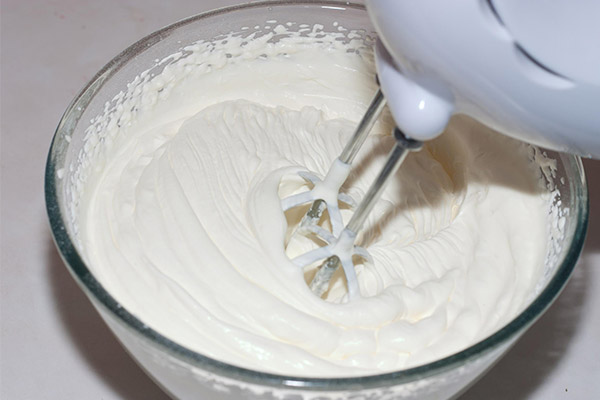
The main thing is to take the product of the required fat content. If you need to get strong peaks that will hold their shape, then for the work take cream with a fat content of more than 30%. When you need a delicate cream, which should soak the crusts, it is better to take cream of 20 percent.
The second prerequisite is the proper temperature of both the product and the pan. The cream and the cup in which it will be whipped must be cold. A warm product will only melt more when processed and will not thicken for a long time, which can lead to stratification and release of whey. There will also be a problem with overcreamed cream. The fat will begin to curdle and collect in the butter. It is worth to put the product in the fridge beforehand so that it cools down well. And the cup can be put in the freezer for 10-15 minutes. If the temperature in the kitchen is high and there are fears that the cream will quickly heat up, you can place the bowl in a bowl with a larger volume of ice while you work.
Success also depends on the tools and whipping technique used. Many insist that the cream should only be whipped by hand with a whisk. This allows you to maintain the necessary speed and monitor the process of thickening of the product. Nevertheless, you can also use a mixer. In this case, you should start with a low speed, gradually increasing the speed. Do not use the maximum settings. You might miss the point at which the whey begins to come out. It is not necessary to move the whisk all over the cup when whipping. The cream must circulate through the container by itself. Under no circumstances should you use a blender. This device is still designed for chopping, so its work will definitely lead to the stratification of cream. Of all kitchen appliances, a food processor with a special whisk attachment is considered the best option. It allows you to maintain a uniform speed, and you can always assess the degree of readiness of the product.
Additional additives in the form of sugar, gelatin, enhancers are introduced in the process, when the cream has already begun to take shape. If they are added at the beginning, the cream may never start to thicken. Also, they are added gradually, if they are added all at once, the resulting volume can fall off. The product will be ruined.
33% cream
Cream with a 33% fat content is most often made into a stable, airy froth. It is used to decorate desserts, layered biscuits, added to hot chocolate or coffee, it also serves as the basis for making other creams. In addition to cream, it contains powdered sugar and vanilla. Sometimes it is flavored with coffee, citrus peel. The cream should be fluffy and airy, the thick foam should hold its shape and not fall off. This can be achieved if you follow the recipe exactly.
Everything starts with choosing a quality product. The cream must be fresh, organic, without the addition of enhancers, stabilizers and thickeners.
The product should be well chilled before whipping, but not frozen. All utensils and tools should also be cold. If a mixer or food processor is used, put the utensils in the freezer 10 minutes before whipping. If the room is very hot, it is better to keep a bowl of cream in another bowl of larger volume, where pre-pour ice.
When whipping, it is important to watch the timing and consistency of the product. If you overdo the cream just a little bit, it will immediately begin to turn into sweet butter. You'll have to start all over again. When beating with a mixer, you should not set the maximum speed. You should start with a low speed, gradually increasing it, but do not use the highest speed. Medium speed allows the cream to absorb more air and make it more voluminous. You should periodically check the thickness of the mixture. As soon as the cream forms dense, stable peaks that don't spill or spread, it's time to stop whipping. The cream is ready.
The cream should first be whipped without adding sugar or other ingredients. For the first minute bubbles will form on the surface, then the mass will begin to thicken. Now you can add powdered sugar in small portions, so that the cream does not fall off. It is better to use powdered sugar rather than sugar. The heavy cream is whipped very quickly, so the sugar does not have time to disperse, and the granules crunch on the teeth when you eat, which is unpleasant. Flavorings (vanilla, cocoa, citrus zest) are added along with powdered sugar. The amount of sugar is determined by taste.
On average, the whipping time is 2-5 minutes, it all depends on the product, conditions, speed of whipping and other factors.
Depending on the purpose of the cream, the consistency is determined. If you need to soak the cakes, it is better to stop at the moment when the peaks are still soft, but no longer spread. This way the layers will be juicier. To create decorations, which should hold their shape, it is necessary to achieve strong peaks. It is necessary to carefully watch that the whey does not begin to stand out.
If you need to whip a large volume of product, it is better to divide it into several portions.
Whipping cream 20%
It is impossible to whip cream with 20% fat and get a thick, airy cream without using certain tricks. The product may thicken a little, but it will still not hold its shape, continuing to spread. If you need a thick sauce or cake dressing, this may be quite sufficient.
Often there are situations when it is not possible to buy heavy cream in the nearest store, and only 20-percent nonfat, drinkable cream is available. In this case, you can use a couple of tips that will help get a dense, airy foam and use it to decorate pastries.
One way is to use a strongly chilled product and utensil. The cream should be placed in the refrigerator 2 hours before it is needed to make the cream. Also send to the refrigerator the whisk or mixer attachments, the bowl where the product will be whipped. Prepare in advance and ice. You can buy it in a store or make it yourself using special molds.
When everything is cool enough, take a large bowl, put ice in it, put a cup on top where you will whip, put the cream, take a whisk or mixer and start the process. First, whip the product without adding sugar or other ingredients. It is worth recalling that the whipping time is affected by the fat content of the product. Therefore, less fat cream will need more time. Once they start to thicken, you can gradually introduce additional ingredients. It is still worth carefully watching the process, so as not to miss the time when you need to stop. Once you manage to achieve the desired consistency, put the finished cream back in the refrigerator until it finally thickens.
It should be noted that this method does not always give one hundred percent results. Too many factors and conditions can affect the process, leading to failure.
Other methods recommend increasing the fat content of cream at home. This can be done in one of two ways: remove excess moisture by reducing the volume of the product, or increase the fat content.
Removing excess moisture should be done gradually, with strict adherence to the recommendations. Send the cream for 20 minutes in the freezer. For the same time in the chamber also put tools and bowls. If the room is hot, then it is also worth stocking up on ice to maintain a constant temperature during the work, placing it in a larger container.
Once the cream has cooled sufficiently, place it in a cold bowl and start whipping with a whisk. If using a mixer, use a medium speed. When the cream has thickened, put it back in the freezer for 20 minutes. It is worth watching the cooling process. The time depends on the capacity of the freezer, the volume and the quality of the product. After the allotted time, take out the bowl with the cream, push a little thickened mass from the walls of the container. The whey will form at the bottom. Holding the resulting mass, drain the whey. The remaining product can now be whipped to stiff peaks.
Increase the fatness in the second way through the addition of butter. It is recommended to use rustic butter with a fat content of 80%. The cream should be poured into a saucepan. Grate the butter on a fine grater. Combine the two products together and start heating the pan over low heat. Heat the cream until the butter actively melts. Remove from the heat and do not let the cream come to a boil. When the butter is completely dissolved, pour into a bowl. You will need a blender with flat blades. With a blender on medium speed, mix the prepared mixture for 2-3 minutes. Pour the resulting thick liquid into a chilled bowl and cover with gauze folded in several layers to prevent condensation. Close the cup with the lid and leave in the refrigerator for 8 hours. Now you can whip them in the usual way.
Dried cream
If regular heavy cream is not available, you can use the recipe for making creme Chantilly with dried cream. The resulting whipped cream is virtually the same as that made with a heavy product. This recipe can be kept in reserve, in case guests are suddenly on the doorstep and you need to quickly prepare a tasty treat. For this purpose, it is enough to have at home a package of dried cream, which is distinguished by a long shelf life, and milk.
The principle of preparation is to recover the cream with milk, the resulting mass is then whipped in the same way as with the usual liquid fat product.
The milk should first be chilled in the refrigerator. Then dilute the dried cream in the cooled milk. The amount of cream is equal to 1/4 of the amount of milk (for example, for 250 ml of milk - 60 g of powdered cream). Then add powdered sugar to taste. Beat with a mixer until stiff peaks form. Use a medium speed.
To obtain the desired result, it is worth using whipping cream.
For the cream
To get a cream that can be used to decorate desserts or serve with fruit or berries, you must choose the best quality product, fresh and at least 30% fat. In addition to sugar, you can add a variety of additives to the cream, which will give additional color and flavor. But do not get carried away with it. Too many additives can affect the result. Everything is good in moderation.
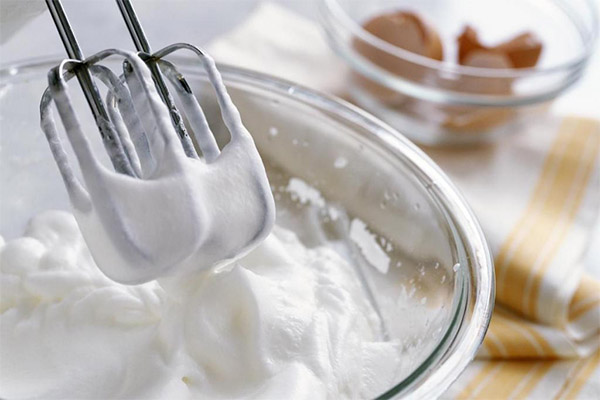
Cream, a bowl for whipping, whisk or attachment for the mixer beforehand should be well chilled in the refrigerator. If time is limited, you can put it in the freezer, making sure that the cream does not freeze. If they crystallize, they cannot be used to make the cream.
At the whipping stage, do not use too high speed of the mixer. First, whip the cream without adding sugar, the cream should thicken a little. Then add the sugar and flavorings. Pastry chefs recommend using powdered sugar and adding it in batches. The sugar is too coarse and heavy. It needs time to dissolve. You can either break the cream and it will start to turn into butter, or the sugar crystals will not have time to melt and will be unpleasant to squeak on your teeth.
Ready-made cream is not intended for long-term storage. It is recommended to use it immediately.
For the cake
When whipping cream for the cake, you should consider how exactly the cream will be used. If it is needed to impregnate and moisten the cakes, it is not necessary to achieve a stable foam. Such cream will hold its shape well between layers, but the biscuit will remain dry. It will be better if it is soft and soaks into each layer. If you need the cream to decorate the dessert, then it is worth pursuing the consistency of the formation of stable peaks. The cream should hold its shape and not spill out, so as not to spoil the appearance.
The technology of preparation of both variants is practically the same. The product should be cooled first, then whipped for a minute until it starts to thicken. After that, add sugar and flavorings to the bowl if necessary. To get the cream for the soaking, just continue to whip for 2 minutes. For use in making decorations, whip a little longer, without getting carried away so as not to get butter and whey.
With powdered sugar.
Powdered sugar has advantages over sugar. Its particles are much finer, lighter and dissolve quickly. These parameters are important when working with cream. The heavy cream is whipped for several minutes, and the sugar crystals sometimes don't have time to melt completely. This spoils the texture of the cream. It is unpleasant to eat, because it loses its lightness, tenderness and airiness. Also, sugar is quite heavy, adding it to an already slightly whipped cream can cause the foam to fall off. After that, the cream becomes liquid again and no longer thickens. For this reason, powdered sugar is preferable to whipping cream.
In addition, powdered sugar can easily be made at home. For this you need only a coffee grinder. You need to put the sugar in the device. In a couple of seconds, the powdered sugar will be ready. Before grinding, you can add vanillin, spices, lemon zest in advance. Then the powdered sugar will already be flavored.
The amount of powdered sugar is calculated individually. Here it is worth relying on your own taste and preferences. But remember that its excessive presence will not only spoil the taste of the cream, but may also affect the consistency when whipping.
With condensed milk
Whipped cream with condensed milk has a peculiar taste of caramel. Such cream can be used as a drenching between layers of cake, and for decorating coffee or hot chocolate. When making it, it is worth bearing in mind that condensed milk has a viscous texture, which will affect the process of whipping the cream. Therefore, only cream of high fat content is used to make such a cream. Others simply will not thicken, and will remain liquid. The best option in this case is homemade cream, which in a day can independently thicken.
The process itself is quite simple. The cream and condensed milk must be well chilled beforehand, but not frozen. Also, it is necessary to use a chilled bowl and tools when working. When working in a hot room, it is better to set the bowl with the cream in a larger container with ice. Mix all the ingredients at once. You can add a little more powdered sugar. Take twice as much cream as milk.
Beat the cream with a mixer on medium speed. At first bubbles will appear on the surface. After 10 minutes the cream will thicken. It remains to bring to the desired consistency and can be used.
For ice cream
A classic recipe for ice cream includes cream. To properly whip the cream for this treat, you need to follow a few simple rules. First of all, success depends on the quality of the product. The cream must be fresh, with no unpleasant odor or taste. Only heavy cream should be used for ice cream. The ice cream should have a light and soft texture, be tender and creamy, without ice crystals. This can only be achieved by using heavy cream. In order not to spoil the texture, it is also recommended to add powdered sugar instead of sugar.
First, the cream is well chilled, along with them in a refrigerator for 2 hours should be kept in a bowl for whipping, whiskers or attachments for the mixer. So that the product does not heat up in the process, it is recommended to put the bowl with the cream in another container, where to pour ice. You can use an old recipe, which was used in ancient times. Sprinkle the ice with salt, then its temperature drops a couple of degrees more.
Whip the cream with a whisk or mixer on medium speed. The maximum speed will not allow you to catch the moment when the whey can be released. This should not be allowed to happen. As soon as the product begins to thicken, introduce the powdered sugar. When soft peaks form, reduce the intensity of the beating. This consistency will be sufficient. You can proceed to the preparation of the ice cream.
For the coffee
It is recommended to use heavy cream, which can be whipped to sturdy peaks. The product should be well chilled beforehand and whipped with a mixer until thick. You can add powdered sugar, cinnamon, cocoa. It remains to boil coffee, pour it into a glass and put a ball of the resulting cream on top.
You can also whip cream for cappuccino. In this case, too, heavy cream is used. But they are not whipped cold, but warm. To do this, it is enough to heat them a little in a saucepan on the stove, but in no case bring them to a boil, and whip them with a mixer. You should get a thick liquid. Readiness is checked simply. First, foam forms on the surface, as soon as it falls off, you need to stop whipping. The cream is ready, you can add it to the black coffee.
How to thicken whipping cream
It is not always possible to achieve the desired result. There can be many reasons why the cream is not whipped into a thick foam - poor quality raw materials, the liquid does not meet the necessary parameters and more. In this case, you can use additives that will thicken the product and get the right consistency of cream.
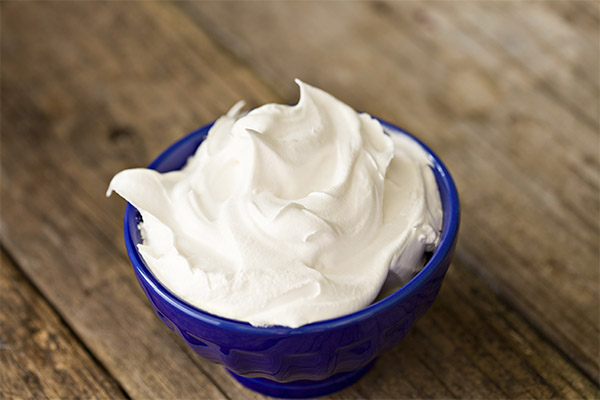
The easiest way is to buy a special thickener in a store. But it can not always be found on the shelves. In this case, old tried-and-true methods can help.
Standard thickeners contain starch and powdered sugar. Therefore, such a tool can be prepared at home. The mixture should be made at the rate of 1 part potato starch to 2 parts powdered sugar. Add the resulting mixture to the cream (1 tsp. thickener per 100 grams of cream), stir until completely dissolved, and whisk everything with a mixer on low speed. Allow to stand, and whip the thickened mass.
A second way to thicken the cream is to use lemon juice. Here it is necessary to observe the proportions, so that the cream does not have a sour taste. 1 tsp of juice is enough for 1 liter of cream. Cool them first, then add the juice. Beat with a mixer to the desired consistency.
Gelatin also allows you to thicken the cream. 1 tsp is enough for about 500-600 grams of cream. Pour out some of the cream and add the gelatin. Give time for it to swell. The rest of the cream should be placed in the refrigerator. When the gelatin has swollen sufficiently, heat the mixture, but do not boil until the gelatin has dissolved. Allow the mixture to cool well before adding to the remaining cream. Start by beating the cooled cream with the mixer on low speed, then add the cream and gelatin mixture, increasing the speed to maximum. Whisk until the cream has thickened.
How cream is useful
Although cream is quite a fatty product, it has positive effects on the health of the body. Vitamin D is known to help the absorption of calcium and fluoride, which play an important role in musculoskeletal health. This vitamin is only found in animal fats, which are found in large quantities in cream. Therefore, calcium and fluoride are better absorbed when consuming cream than milk. The product also contains lecithin, which helps to fight cholesterol deposits in the blood vessels. The consumption of the dainty has a favorable effect on the mood, the psychological state.
But there are also contraindications. Because of the fat content, cream is not recommended to eat in large quantities to people suffering from obesity or pancreatic diseases.
«Important: All information on the site is provided solely for informational for your own health. Consult with your health care professional before applying any recommendations. specialist. Neither the editors nor the authors are liable for any possible harm caused by materials."

